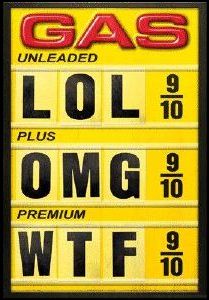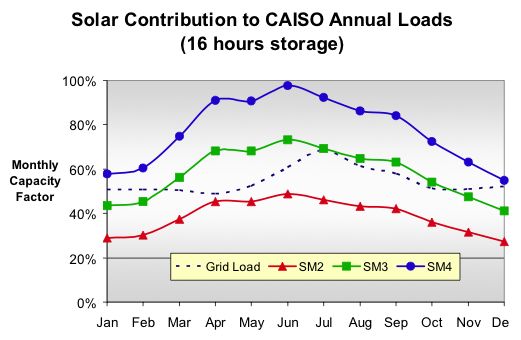Blog Archives
One Air Car

Zero Pollution Motors is designing a set of air powered cars for release in the US. That’s right, these vehicles use compressed air (and at speeds over 35mph, small amounts of fuel mixed with compressed air) to power a 6 seat vehicle over 800 miles on 8 gallons of fuel plus the compressed air. The air is stored in on-board carbon fiber tanks that have the tendency to rip rather than explode on impact. This is important as the pressure being held in each vessel is in excess of 300 bar. Wow. That’s going to be tough to handle!
ZPM has been garnering a bunch of press lately on the heels of their recent announcement with Tata Motors of India. An interesting concept to be sure.
Green DIY Electric Motorcycle
We thought highlighting a “green motorcycle” would be a great way to celebrate St. Patrick’s Day. Watch the video below to see an interesting project (the music is a little over the top, you might turn down the volume if that sort of thing bothers you.)
This is a great project and a great way to recycle old vehicles. We love to see activities like these as it provides some hope that people will actually find ways to help innovate out of our present crisis, dependency on foreign energy. Think of a local transport like this charged in a distributed manner…that could be very high impact. Now, if an individual can do this for less than $3,000, why can’t a vehicle manufacturer pull it off?
- D&D SepEx Motor (about 45 ft-pd torque at 2000rpm)
- 400 Amp Alltrax Controller with PC link
- Four 12 volt deep cycle marine batteries (Wal-Mart)
- Four on-board battery chargers
- 6:1 gear ratio
The bike has a top speed of 45mph and a range of about 30 miles. Operating cost appears to be in the range of $0.02/mile.
2 comments
A Live Tesla
Last night, one of our partners was in Palo Alto for an unrelated event and bumped into a real, live Tesla on the street. Apparently, there was some sort of Tesla party at the Blue Chalk Cafe – it was quite the event. But it was nothing compared to the car, wow. It’s compact, it’s sleek, and we want one. For your viewing enjoyment, here’s a picture of a live production Tesla Coupe.

Tips for Fuel Efficiency
As the price at the pump continues to rise, the transportation segment looks for more ways to reduce cost of fuel. It is possible that there are a few very simple things we can do that will reduce our gasoline consumption by as much as 10%. Most are simple, most are common sense, and most are very inexpensive. Here are some simple ideas to increase fuel efficiency:

- Remove Unnecessary Mass – Each reduction of 45kg (100lbs) will increase fuel efficiency as much as 2%. One of our partners observes “Another good reason to diet.”
- Proper Tire Inflation – This simple item can increase fuel efficiency as much as 3%. Even if you must pay for air, you’ll get a return on your investment.
- Tune Up – Having the right grade and fresh motor oil along with a clean air filter can increase fuel efficiency as much as 5%.
- Drive Sensibly – Interestingly, the thing that is right in our control is the thing that we least frequently do. Drive the speed limit, avoid hot rod starts and stops, and try to use your brakes as little as possible. Depending on your driving technique, this can yield 5-33% better fuel economy.
- Combine Trips – This pre-planning makes it possible to reduce overall driving and fuel demand.
- Don’t Idle – Any stop longer than a traffic light and you should consider switching your engine off; idling simply burns fuel with no forward momentum.
- Alter the Commute – There are several ways to do this including biking to work, taking public transit, telecommuting, and even shifting your work schedule to spend less time simply sitting in traffic.
Try some or all of the techniques above and see how your fuel efficiency changes. Most importantly though, measure your consumption. Before you change anything, establish a baseline consumption level, once that is calculated, make one change and observe the result. Then make the next change and observe the result. In this way, you can make a 10% difference and know which items have the most impact in your situation.
Thanks for dropping by, you can also save money by replacing your old incandescent bulbs with compact fluorescent. We’ve got real data on electricity consumption before and after switching out the 83 of 95 bulbs in one home. Think it’s pennies? You’d be surprised, we’re on track for a $4,100 savings – $600 better than our initial projections.
Ausra’s Bold Claim
We’ve been tracking solar thermal for some time as it is intended to be part of our Sou Hills project in due course. One of the more interesting players to enter the fray is Ausra, an Australian company transplanted to the US and the recipient of substantial funding from Khosla Ventures. Recently, David Mills and Robert Morgan, principals in Ausra, published a paper in which the claim is made that solar thermal could account for the entire US energy supply. Here’s a link to their paper.
It’s not lost on most people that the Sun does not shine 24×7 and, in fact, that it doesn’t shine every day even in a desert environment. Thus the stunningly low capacity factors delivered by solar solutions, both thermal and PV. However, with the advent of storage (water, pumped water, capacitors, and molten salts) this is beginning to change somewhat. The thesis advanced by Mills and Morgan is that an oversized solar array matched with a huge storage system sufficient for 16 hours of operation would be able to produce at baseload levels.

The “catch” to this whole approach is that to make the system work at baseload, a developer has the added cost of sizing the solar array 3x larger than normal and installing a huge storage system. Nevada Solar One is a 64MWe project that cost somewhere north of $250M in capital to complete. That’s around $3.9M/MWe at normal sizing. If we consider that the storage system is “free” and up the size 3x, that’s $750M+ capital cost to get 64MWe baseload generation, or $11.7M/MWe. To put this in perspective, a natural gas fired plant is on the order of $1M/MWe, clean coal is $3M/MWe, geothermal is $3M/MWe.
That’s not to say that the economics won’t change, as solar thermal becomes higher volume in production, the price should drop. If the price drops by 2/3, then there is an interesting discussion to be had, because sunshine is an underutilized resource. Also, we found the discussion about oil in the paper to be specious, less than 2% of the US energy load is generated with petroleum based products. If the authors wish to be taken seriously, they would address the technology vs. coal, nuclear, and natural gas generation as they are the top 3 producers of electricity in the US.
Nevertheless, it is an interesting assertion and it’s clear we can and should do more with solar thermal harvest than is happening today. Let’s hope Ausra and their cohorts can change the economic model to make this option viable.
2 comments








